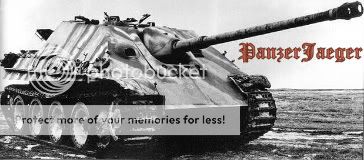Graham and Durbin had been demanding for more than a month that the CIA produce an NIE on the Iraqi threat--a summary of the available intelligence, reflecting the judgment of the entire intelligence community--and toward the end of September, it was delivered. Like Tenet's earlier letter, the classified NIE was balanced in its assessments. Graham called on Tenet to produce a declassified version of the report that could guide members in voting on the resolution. Graham and Durbin both hoped the declassified report would rebut the kinds of overheated claims they were hearing from administration spokespeople. As Durbin tells TNR, "The most frustrating thing I find is when you have credible evidence on the intelligence committee that is directly contradictory to statements made by the administration."
On October 1, 2002, Tenet produced a declassified NIE. But Graham and Durbin were outraged to find that it omitted the qualifications and countervailing evidence that had characterized the classified version and played up the claims that strengthened the administration's case for war. For instance, the intelligence report cited the much-disputed aluminum tubes as evidence that Saddam "remains intent on acquiring" nuclear weapons. And it claimed, "All intelligence experts agree that Iraq is seeking nuclear weapons and that these tubes could be used in a centrifuge enrichment program"--a blatant mischaracterization. Subsequently, the NIE allowed that "some" experts might disagree but insisted that "most" did not, never mentioning that the DOE's expert analysts had determined the tubes were not suitable for a nuclear weapons program. The NIE also said that Iraq had "begun renewed production of chemical warfare agents"--which the DIA report had left pointedly in doubt. Graham demanded that the CIA declassify dissenting portions.
In response, Tenet produced a single-page letter. It satisfied one of Graham's requests: It included a statement that there was a "low" likelihood of Iraq launching an unprovoked attack on the United States. But it also contained a sop to the administration, stating without qualification that the CIA had "solid reporting of senior-level contacts between Iraq and al-Qaeda going back a decade." Graham demanded that Tenet declassify more of the report, and Tenet promised to fax over additional material.
But, later that evening, Graham received a call from the CIA, informing him that the White House had ordered Tenet not to release anything more...
Five of the nine Democrats on the Senate Intelligence Committee, including Graham and Durbin, ultimately voted against the resolution, but they were unable to convince other committee members or a majority in the Senate itself. This was at least in part because they were not allowed to divulge what they knew: While Graham and Durbin could complain that the administration's and Tenet's own statements contradicted the classified reports they had read, they could not say what was actually in those reports.
Bush, meanwhile, had no compunction about claiming that the "evidence indicates Iraq is reconstituting its nuclear weapons program." In the words of one former Intelligence Committee staffer, "He is the president of the United States. And, when the president of the United States says, 'My advisers and I have sat down, and we've read the intelligence, and we believe there is a tie between Iraq and Al Qaeda,' ... you take it seriously. It carries a huge amount of weight."
LINK (very good article)



 Reply With Quote
Reply With Quote













 Who's oppinion got more credability out of that? So who is it that's trying to revision the history?
Who's oppinion got more credability out of that? So who is it that's trying to revision the history? 
 Hey the UN had their own intelligence , what did they descide .
Hey the UN had their own intelligence , what did they descide .


 " and win an argument.
" and win an argument.



Bookmarks